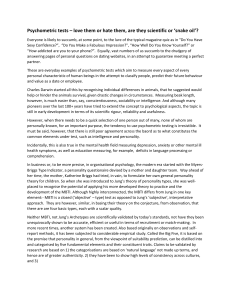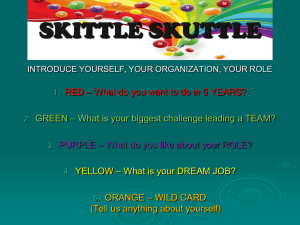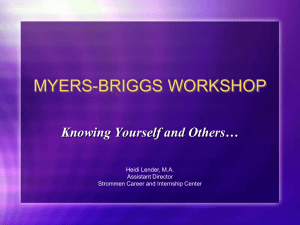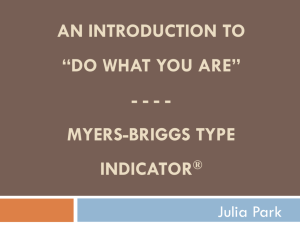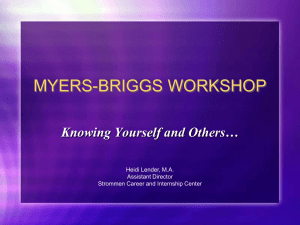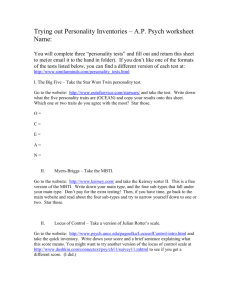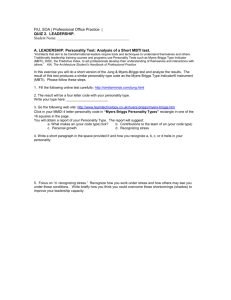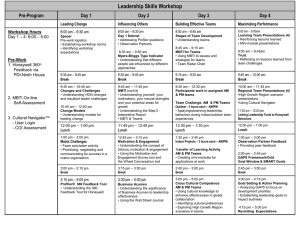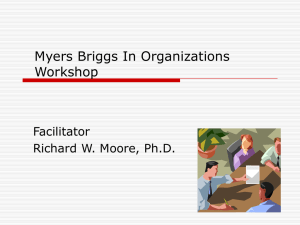Introduction to the MBTI
advertisement
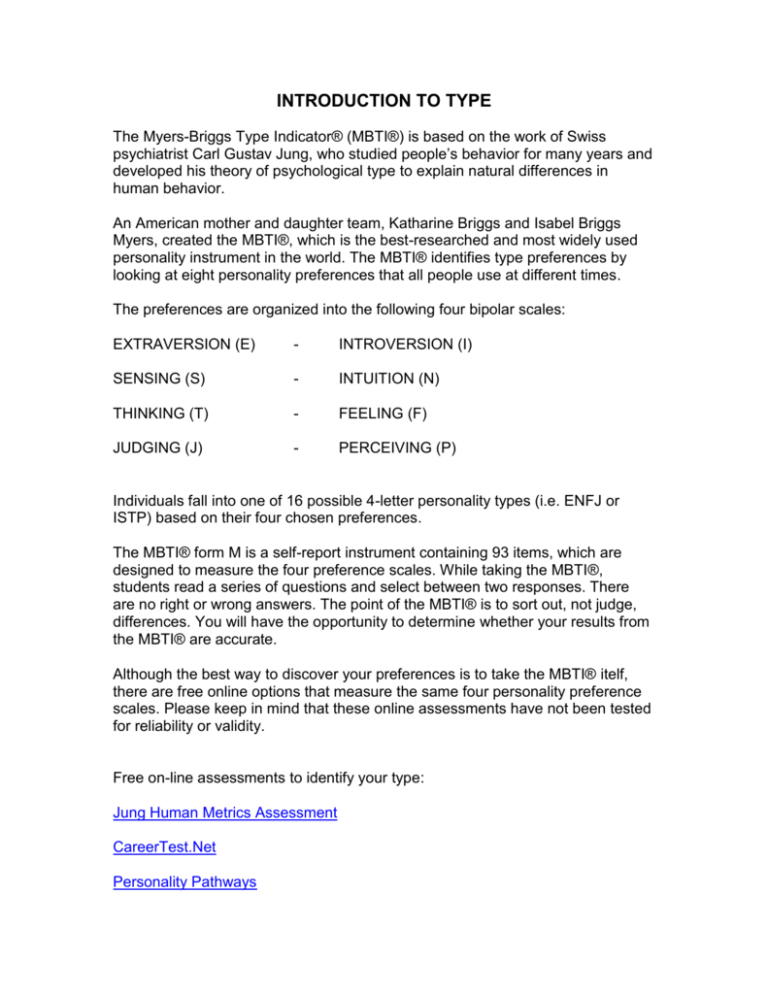
INTRODUCTION TO TYPE The Myers-Briggs Type Indicator® (MBTI®) is based on the work of Swiss psychiatrist Carl Gustav Jung, who studied people’s behavior for many years and developed his theory of psychological type to explain natural differences in human behavior. An American mother and daughter team, Katharine Briggs and Isabel Briggs Myers, created the MBTI®, which is the best-researched and most widely used personality instrument in the world. The MBTI® identifies type preferences by looking at eight personality preferences that all people use at different times. The preferences are organized into the following four bipolar scales: EXTRAVERSION (E) - INTROVERSION (I) SENSING (S) - INTUITION (N) THINKING (T) - FEELING (F) JUDGING (J) - PERCEIVING (P) Individuals fall into one of 16 possible 4-letter personality types (i.e. ENFJ or ISTP) based on their four chosen preferences. The MBTI® form M is a self-report instrument containing 93 items, which are designed to measure the four preference scales. While taking the MBTI®, students read a series of questions and select between two responses. There are no right or wrong answers. The point of the MBTI® is to sort out, not judge, differences. You will have the opportunity to determine whether your results from the MBTI® are accurate. Although the best way to discover your preferences is to take the MBTI® itelf, there are free online options that measure the same four personality preference scales. Please keep in mind that these online assessments have not been tested for reliability or validity. Free on-line assessments to identify your type: Jung Human Metrics Assessment CareerTest.Net Personality Pathways
